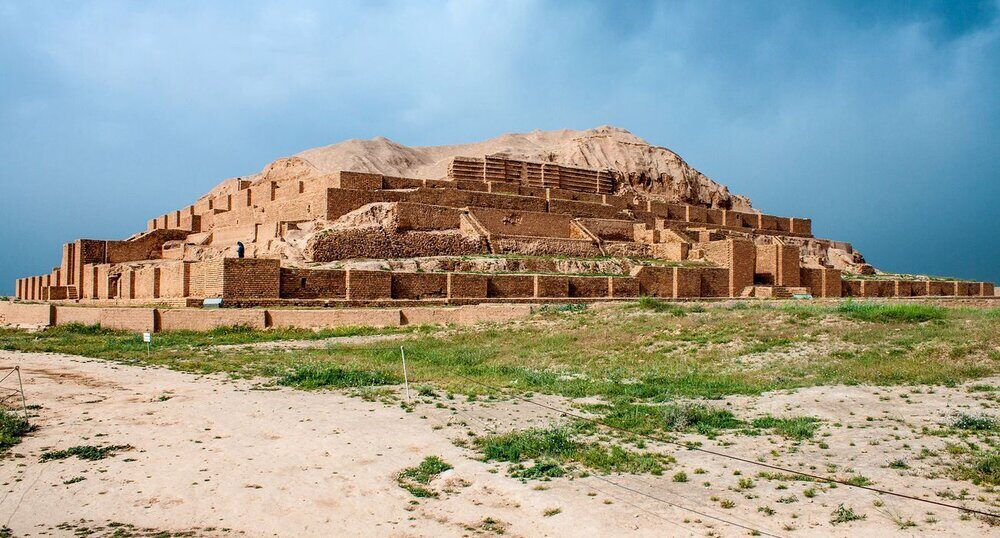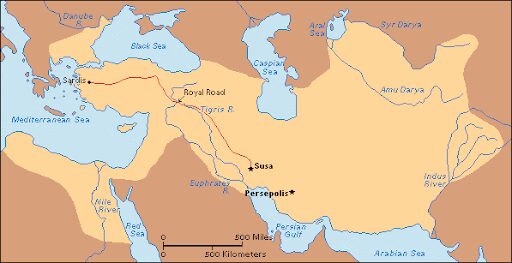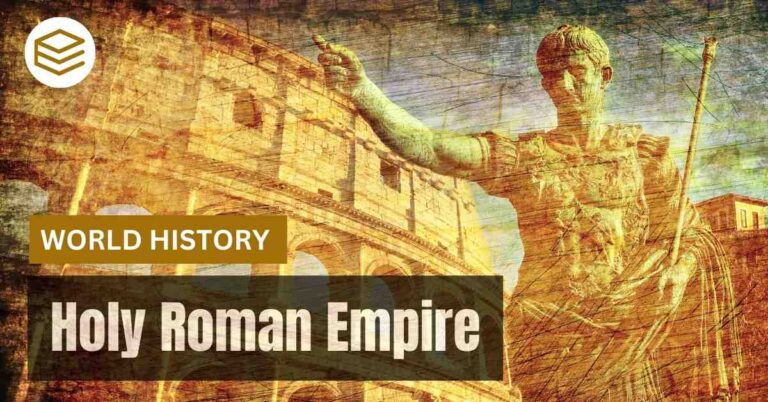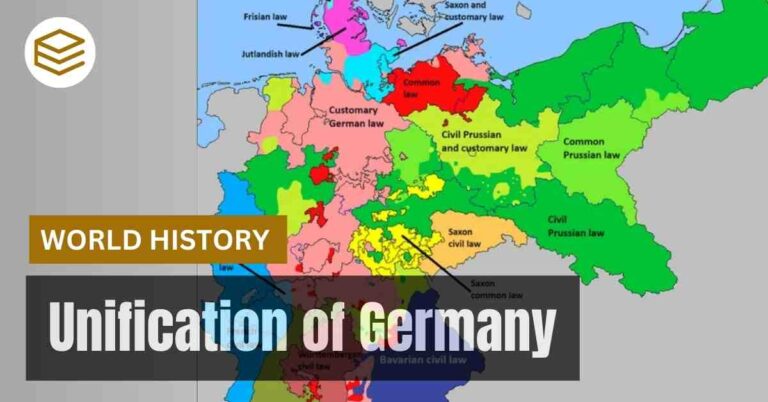December 13, 2025 6:30 am
Introduction
The Achaemenid Empire, also known as the First Persian Empire, was one of the largest and most influential empires in ancient history. Spanning from approximately 550 BCE to 330 BCE, it encompassed territories stretching from the Indus Valley in the east to the Aegean Sea in the west and from the Caucasus in the north to the Persian Gulf in the south. Founded by Cyrus the Great, the Achaemenid Empire is remembered for its innovative governance, tolerance of cultural diversity, and monumental achievements in architecture and administration.
This comprehensive study explores every facet of the Achaemenid Empire, including its origins, expansion, administration, military strategies, cultural contributions, religion, economy, interactions with other civilizations, and its eventual decline.
Origins of the Achaemenid Empire
Early History
- The Achaemenid dynasty traces its roots to the Persian tribes of the Iranian Plateau.
- The dynasty derives its name from Achaemenes, a semi-legendary figure who is said to have established the lineage.
- By the 7th century BCE, the Persians were vassals of the Median Empire.
Rise of Cyrus the Great
- Cyrus II, known as Cyrus the Great, revolted against Median overlordship around 550 BCE, defeating Astyages, the last Median king.
- With this victory, Cyrus established the foundation of the Achaemenid Empire, uniting the Persian and Median factions.
- His conquests extended to Lydia (546 BCE), Babylon (539 BCE), and parts of Central Asia, laying the groundwork for one of history’s largest empires.
Territorial Expansion
Conquests by Cyrus the Great
- Lydia: Cyrus defeated King Croesus and incorporated Lydia’s rich territories into the empire.
- Neo-Babylonian Empire: In 539 BCE, Cyrus captured Babylon and was hailed as a liberator, allowing religious freedom and facilitating the return of the Jews to Jerusalem.
Expansion Under Cambyses II
- Cyrus’s successor, Cambyses II, extended the empire to Egypt, defeating Pharaoh Psamtik III at the Battle of Pelusium in 525 BCE.
- Cambyses declared himself Pharaoh, integrating Egyptian governance and culture into the Achaemenid system.
Darius I: The Apex of the Empire
- Darius I (522-486 BCE), also known as Darius the Great, expanded the empire further into India, Thrace, and the Greek islands.
- He established the Satrapy system and launched infrastructural projects such as the Royal Road.
Administration and Governance
The Satrapy System
- The empire was divided into provinces called satrapies, each governed by a satrap (governor).
- Satraps were responsible for collecting taxes, maintaining security, and ensuring loyalty to the central authority.
Taxation and Tribute
- A standardized system of taxation was implemented, with each satrapy contributing according to its economic capacity.
- The gold coinage system, introduced by Darius, standardized the empire’s economy.
Legal System
- The Achaemenids codified laws that respected local customs and traditions.
- Darius established the Royal Judges, a judiciary system ensuring fairness across the empire.
Military Organization
Structure of the Army
- The Achaemenid military was diverse, reflecting the multi-ethnic composition of the empire.
- Key units included the Persian Immortals, an elite force of 10,000 soldiers who formed the backbone of the army.
Innovations in Warfare
- Use of war chariots, cavalry, and advanced siege techniques.
- Naval forces were enhanced, particularly during Darius I’s reign, with contributions from Phoenicians and Ionians.
Major Campaigns
- Greco-Persian Wars: Darius and his successor, Xerxes I, launched campaigns against Greece, including the famous Battle of Marathon (490 BCE) and Battle of Thermopylae (480 BCE).
- Indian Campaigns: Expanded into the Indus Valley, consolidating control over trade routes.
Cultural Contributions
Architecture
- The Achaemenids are renowned for monumental architectural projects:
- Persepolis: A ceremonial capital showcasing Persian art and engineering.
- Susa and Pasargadae: Centers of administrative and cultural activity.
Art and Symbolism
- Persian art blended influences from conquered regions, including Mesopotamia, Egypt, and Greece.
- Reliefs at Persepolis depict processions of tribute bearers, symbolizing the empire’s diversity and unity.
Literature and Language
- Old Persian, Elamite, Akkadian, and Aramaic were used for administration and inscriptions.
- The Behistun Inscription, created by Darius I, is a trilingual record of his reign and achievements.
Religion in the Achaemenid Empire
Zoroastrian Influence
- The Achaemenid kings, especially Darius I, were adherents of Zoroastrianism, emphasizing the duality of good (Ahura Mazda) and evil (Angra Mainyu).
- Fire temples and rituals were integral to Zoroastrian practices.
Religious Tolerance
- The Achaemenids allowed conquered peoples to practice their religions freely.
- Cyrus the Great is celebrated for his decree allowing the Jews to return to Jerusalem and rebuild their temple.
Economic System
Trade and Commerce
- The Achaemenids established a vast trade network connecting the Indus Valley, Mesopotamia, Egypt, and the Mediterranean.
- The Royal Road, spanning over 1,500 miles, facilitated trade and communication.
Agriculture
- The empire’s economy was heavily reliant on agriculture, with advanced irrigation techniques like qanats ensuring water supply.
Currency
- The introduction of the Daric, a gold coin, standardized transactions and boosted trade.
Interactions with Other Civilizations
Relations with Greece
- The Achaemenids influenced Greek art and culture through direct contact and conflict during the Greco-Persian Wars.
Impact on India
- Achaemenid influence is evident in Indian administration and coinage, particularly during the Mauryan Empire.
Diplomatic Relations
- Maintained ties with distant regions such as Carthage and Scythia, emphasizing peaceful coexistence alongside military dominance.
Achaemenid Empire’s Administrative Innovations
The Satrapy System: Foundation of Regional Governance
The Achaemenid Empire was divided into 20 satrapies, or provinces, each governed by a satrap. This decentralized system allowed the empire to manage vast territories efficiently.
- Roles of a Satrap:
- Tax Collection: Satraps ensured the annual tribute was delivered to the central treasury.
- Military Oversight: They maintained regional armies to defend their provinces.
- Judicial Authority: Local disputes were resolved under their jurisdiction.
- Checks and Balances:
- The king appointed “King’s Eyes and Ears”, inspectors who reported directly to the central authority, ensuring satraps did not rebel.
- Uniformity with Local Autonomy:
- While satraps implemented royal policies, local traditions, laws, and languages were often respected to prevent dissent.
Key Architectural Marvels of the Achaemenid Empire
1. Persepolis: The Ceremonial Capital
- Constructed during Darius I’s reign, Persepolis symbolized the empire’s grandeur.
- Features included:
- Apadana (Audience Hall): A massive hall supported by 72 columns, used for royal ceremonies.
- Staircase Reliefs: Depicted tribute bearers from across the empire, emphasizing unity in diversity.

2. Pasargadae: The Royal Retreat
- Built by Cyrus the Great, Pasargadae was a testament to simplicity and elegance.
- Key features:
- Tomb of Cyrus: A modest yet striking limestone structure.
- Gardens: Representing early examples of Persian garden layouts.

3. Susa: Administrative Hub
- Located strategically near the Elamite heartland, Susa served as a crucial administrative center.
- The Palace of Darius showcased a blend of Mesopotamian, Elamite, and Persian architectural styles.

Diplomatic and Cultural Influence
1. Multiculturalism in Governance
The Achaemenid rulers embraced the diversity of their subjects:
- Respect for local traditions helped maintain peace in regions like Babylon, Egypt, and Anatolia.
- Official inscriptions, like the Behistun Inscription, were written in multiple languages (Old Persian, Elamite, and Akkadian).
2. Road Networks and Communication
- The Royal Road, stretching from Sardis to Susa, facilitated trade, communication, and administration.
- Relay stations along the road allowed messengers to cover 2,700 km in just seven days.

3. Influence on Neighboring Civilizations
- Greek Art and Literature: Exposure to Persian art influenced Hellenistic motifs and architecture.
- Indian Governance: Achaemenid administrative systems found echoes in the Mauryan Empire’s bureaucratic structure.
Economy of the Achaemenid Empire
1. Agricultural Foundation
- The empire’s economy relied heavily on agriculture, with wheat, barley, and dates as staple crops.
- Advanced irrigation techniques like qanats (underground canals) ensured water supply in arid regions.
2. Tribute System
- Satrapies paid tributes in the form of silver, gold, livestock, or natural resources.
- For example, Egypt supplied grains, while India contributed gold dust.
3. Trade and Commerce
- Key trade routes connected the empire to:
- The Indus Valley for spices and textiles.
- The Mediterranean for olive oil and wine.
- Central Asia for horses and minerals.
4. Standardized Currency
- Darius introduced the Daric (gold coin) and the Siglos (silver coin), facilitating trade and taxation across the empire.
Role of Women in the Achaemenid Empire
1. Royal Women

- Queens like Atossa, daughter of Cyrus the Great and wife of Darius I, wielded significant influence in court politics.
- Royal women owned estates, commanded servants, and had a say in administrative decisions.
2. Women in Society
- Women participated in weaving, agriculture, and even administrative roles in temple economies.
- They received wages, as evidenced by records from Persepolis, showcasing a degree of gender inclusivity.
Military Prowess of the Achaemenid Empire
1. Composition of the Army
- The army was a diverse force, with soldiers from Persia, Media, Babylon, Egypt, and even Scythia.
- Units included:
- Infantry: Spearmen, archers, and swordsmen.
- Cavalry: Renowned for their mobility and effectiveness in open battles.
- War Chariots: Equipped with scythes for devastating charges.
2. Key Battles
- Battle of Marathon (490 BCE): Despite their defeat, the Persian army demonstrated remarkable discipline.
- Battle of Thermopylae (480 BCE): Xerxes I’s forces showcased their overwhelming size and coordination.
- Battle of Gaugamela (331 BCE): Alexander the Great’s decisive victory marked the end of the empire.
3. Naval Power
- Persian naval forces were bolstered by the expertise of Phoenician and Ionian sailors.
- The Battle of Salamis (480 BCE) highlighted the limitations of the Persian navy against Greek tactics.
Decline and Fall of the Achaemenid Empire
Internal Challenges
- Succession disputes and regional revolts weakened central authority.
- Overextension made administration and defense difficult.
Alexander the Great
- In 334 BCE, Alexander the Great launched his campaign against the Achaemenid Empire.
- Key battles, including the Battle of Issus (333 BCE) and Battle of Gaugamela (331 BCE), led to the defeat of Darius III and the empire’s collapse.





